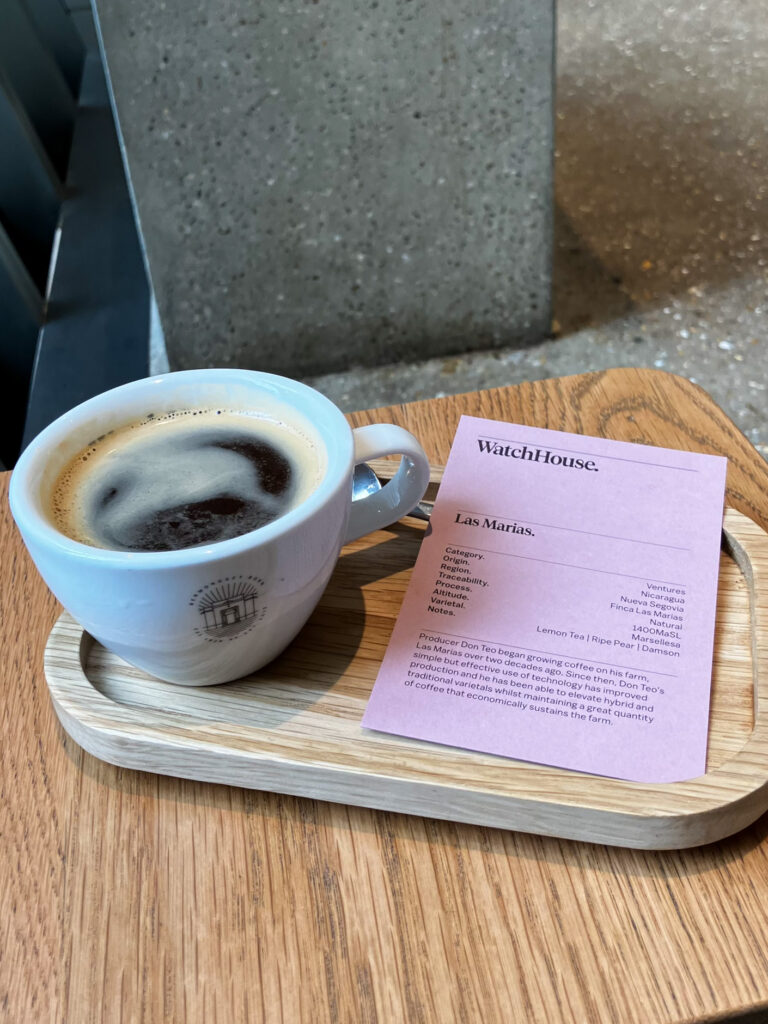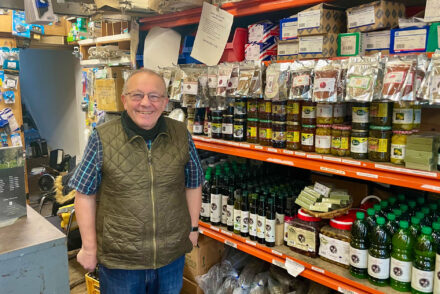I am starting to lose track of which coffee wave we’re currently in. Third? Fourth? I stopped counting somewhere between mushroom macchiatos and the Oleato travesty from Starbucks.
It all started with moving away from Nescafé sachets stirred vigorously into a Sports Direct mug of boiling water, and convincing ourselves that we are, after all, a nation of tea-drinkers; coffee only serves a hit of caffeine needed to fuel our honest hard work.
Our acidulated palates and full wallets were not used to paying £4 for a flat white (or £15 for Alain Ducasse’s Yemeni brew, if you must). But we have certainly come a long way since. Until recently, I wasn’t sure which way that was.
I think the moment of realisation for me happened during the ‘al fresco’ frenzy in that mid-pandemic Tier 2/3 hinterland, where we were meant to suddenly fall for the continental way of drinking outside. Permissions were in place, R values were reliably modelled and cars were banned from driving through Soho. But I was sceptical of this ever resembling any form of Parisian café culture. I couldn’t see past the cornucopia of half-finished Greggs pasties, vomiting bottomless brunchers and glasses of warm Soave diluted with heavy downpours. There were of course those peculiar souls who still developed an unbridled affection for a leaky cup of coffee from Caffè Nero (sorry, we don’t trust you enough with our cups and saucers to serve you a drink in them outside) which they sipped quietly at the back of a loading bay whilst the reversing vans were beeping, as they valiantly warded off the beggars using a wooden stirrer.
But something very different has been going on in the City of London, which never tried to replicate any particular culture. In the past decade, a number of independent coffee shops has increased tenfold, as a testament to a sophisticated urban lifestyle. As the numbers expanded, so did the pursuit of creativity which went far beyond latte art. An antithesis to Italian espresso, these places vary the coffee load (updosing, for example, is a method of adding even more espresso once the initial dose been tamped), volume of water pushed through and pressure. Londoners appear to like it; even as we broke the £3 barrier for a shot of espresso, sales have increased by almost 12% since 2022.
Rosslyn Coffee on Queen Victoria Street has been supplying me with my morning fix for several years now, and their long black is possibly the best cup of coffee I have ever had (bar a few places in Paris, but that might be about more than just coffee). It is always rush hour here — there is an Italian café-style standing counter for quick shots, as well as a couple of benches outside which I am more than happy to queue for. Walking in here is somehow such a mood booster even before you’ve had that first sip, a bit like a friendly dog has just appeared on your morning commute on the Victoria Line.
The cheery baristas are just as happy to chat as they are to leave you looking around and glancing at The Financial Times pages draped across the wall. Rosslyn is truly exceptional — humble, knowledgeable, unpretentious and purposeful. I daresay it is the Noble Rot of coffee shops.
Try this: Long black (with their ‘Roasted for black’ Peruvian bean). They also do a ‘soft serve’ as a tiny coffee-flavoured ice cream, a bit like a grown up Mr. Whippy.
Tucked in next to St Mary’s Axe is WatchHouse. Reclaimed wood, high ceiling, hanging lightbulbs and a wall of seemingly endless blends available as beans or coffee pods catches your eye. Quicker than your stocks plummet during the mini-budget, the shop fills with City bosses, and the ambience shifts from a Himalayan retreat to a pulsating microcosm which feels like the centre of the world. Steam wands hiss, cups and saucers clatter rhythmically, the aromatic tendrils of roasted beans caress the air, and there appears to be a collective respite of the corporate life. It is so joyous to see that London has started to embrace this continental sit-down coffee culture, made possible by the quality offerings (both the coffee and the glassware) and the original design of venues.
Try this: Los Nogales Tasting Flight. If this sounds pretentious, get over it, because it is a great way of sampling an espresso, espresso with milk and filter coffee and seeing how the flavour qualities evolve across a single Colombian bean. Papaya and prune flavours are certainly interesting, and so is the anaerobic washing which is a type of fermentation in the absence of oxygen, causing a build-up of other gases that push the additional juices and sugars into the beans, imparting a stronger flavour.
Coffee shop-wine bar hybrids are on the rise. Where’s Fred’s, in the heart of Square Mile, remains relatively hidden in a university-like campus cluster of buildings. It provides a compelling argument for cafés as places in which you should spend longer than four minutes, using your Apple Pay, and leaving as you delineate the agony of human existence. Exposed brickwork and warm tones set the perfect atmosphere for working, but just as importantly, it has become such a great venue for taking your Northern friends to, specifically those who actually find London too stressful and the ‘why is it £5.50 for a latte and I’ve booked Angus Steakhouse for dinner’ ones. This will prove them wrong about everything.
The transition from a bustling café to a suave wine bar is ever so smooth, with fewer cortados, and more clinking glasses to be seen.
Try this: Piccolo. Great milk texture and strong espresso. All qualities of a flat white, in a shorter, less milky form. However, if you happen to be there between 17:30 and 18:30, enjoy a dozen of half-priced oysters and a glass of Cataratto.
Then we have co-working spaces, such as Shaman Coffee at St Paul’s Riverside, with their focus still unapologetically on the coffee itself. These venues remain the place for people to effortlessly connect and converse, which is worth celebrating in its own right, but with its boho-chic appeal it is significantly different than places like WeWork, for example. The minimalist layout and furniture in the 70s style are given a pastel-coloured Wes Anderson kiss, suffused with plenty of natural light. There is a welcome lack of loud Zoom calls and three-laptop work setups, but perhaps I am more able to block the sounds of corporate ills in such a calm oasis.
Try this: Their house blend is consistently good, but some of the coffee-based cocktails are great, and go well beyond an espresso martini.
Hipster cafés of Islington or Hackney these are not. There are no impossibly savvy baristas who act as if they are doing you a favour. There is no empty posturing spiel about ethical no-waste ground-up crickets which have gone into this blend and will definitely make you a better person. I really don’t want to be briefed on this whilst ordering (WatchHouse will provide dainty cards alongside their coffees which are optional to read), because I neither believe these things are as traceable as they are presented, nor I need to know how this morally superior coffee bean would vote in a General Election. But most importantly, here there is no sour, enamel-shedding coffee with the aftertaste that clings like a stubborn barnacle on a weathered ship.
It is truly inspiring how The City draws people from all over the south east as they come into work, yet remains absolutely its own. Some of it almost feels like a secret, kept strictly within the original seven gates of Roman London, and away from the tourists in Soho. It continues to weave a tapestry of conviviality, vibrancy as well as a sense of importance and having somewhere to be. Perhaps this is exactly what a coffee should do, too.
August 2023
Cover photo licensed by Adobe. Inset photos by Milton Tomic.









